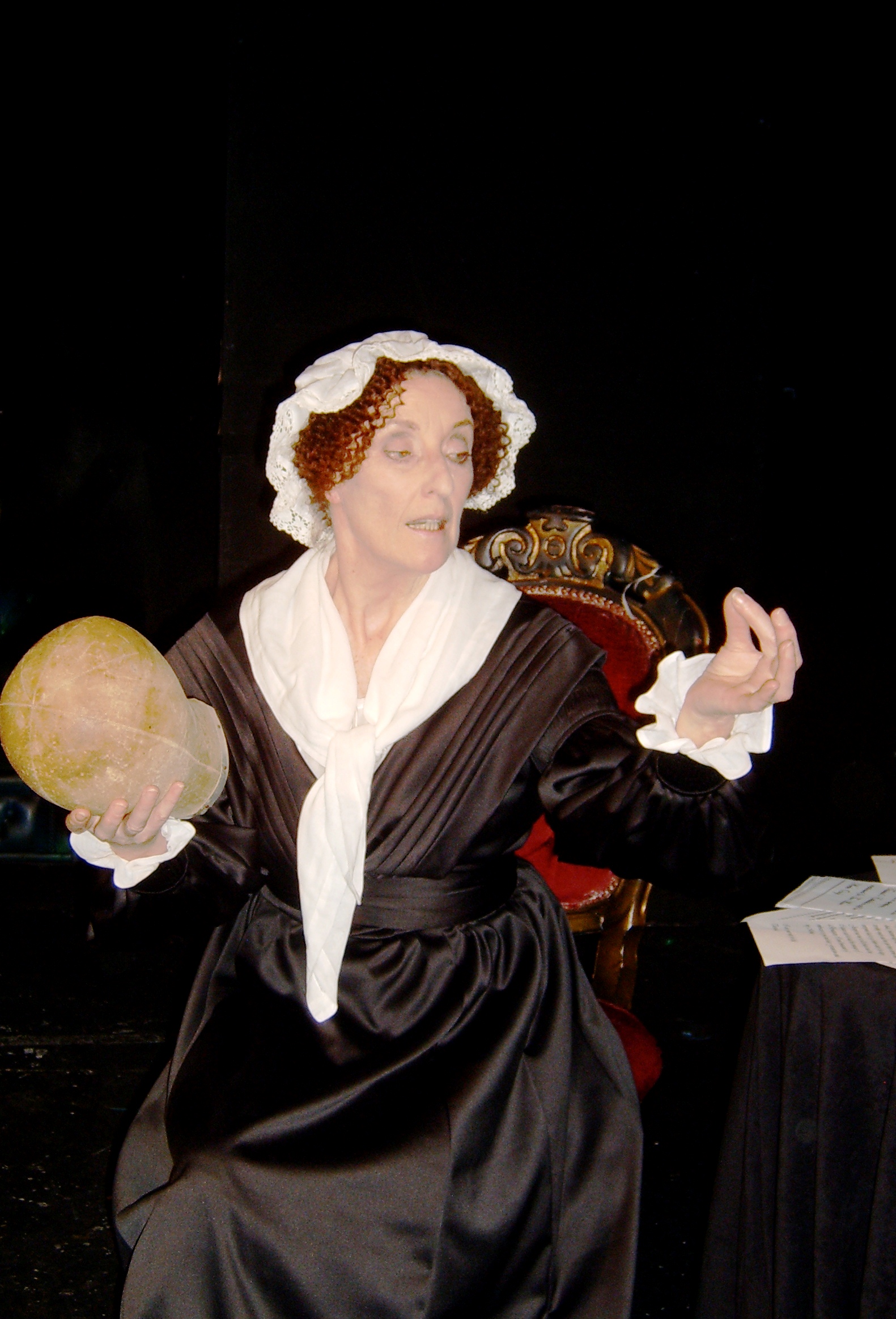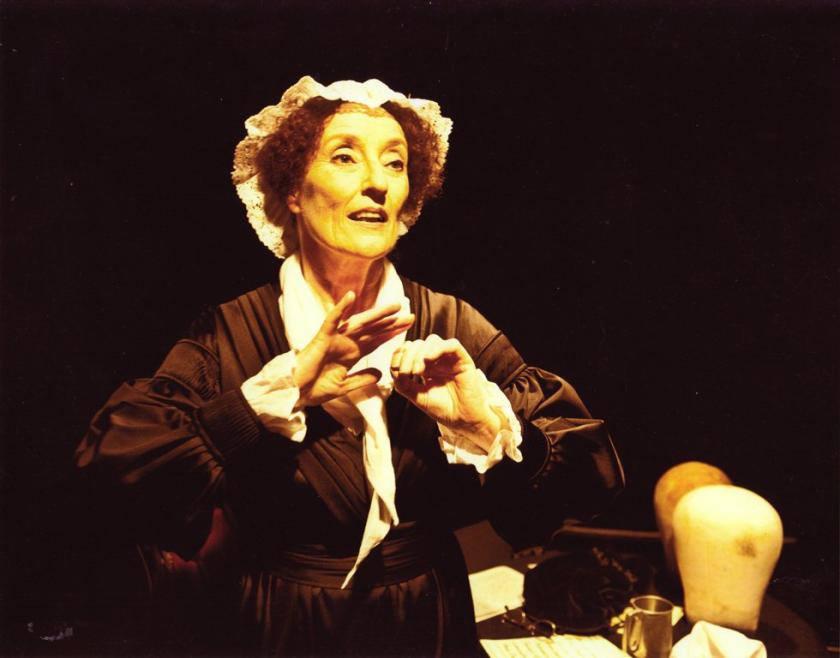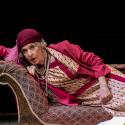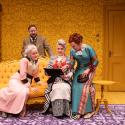Mme Tussaud was born in Bern in 1760. Well, in Strasbourg in 1761. Her father was a respectable tradesman. Or possibly the local hangman. Her mother was a clergyman’s daughter. Or more likely a servant. She taught the King’s sister to model in wax at Versailles, she lived through the French Revolution and the Terror, arrived in England during a break in the French Wars to tour her waxworks, became trapped by the resumption of hostilities and was forced to support herself and her young son, while her husband frittered away her inheritance in Paris. Or maybe most of it didn’t happen. The myth of Mme Tussaud is eventful and dramatic, and certainly theatrical.
Judith Paris, an actress with a long and impressive pedigree, has written her own script, and performs a 90-minute tour-de-force recreation of the main events outlined above, in a production efficiently directed by Gillian Lynne, with excellent and imaginative lighting by Steve Lowe, creating a persuasive world within a world in the New Diorama’s rather 1960s-airport-lounge of a box.
 Paris’s script has some charming moments, particularly when she unleashes her rather sly wit: the British are snobs, she says, not interested in "Egalité – they spit on it – politely, of course"; her potential husband is not really suitable: "I know he is too young. And he knows nothing about wax." (A line which, delivered Paris-style, has the makings of a camp classic.) But these moments are not enough to overcome the overwriting of other sections – Louis XVI and Marie-Antoinette didn’t know "how fragile the bubble of their existence was".
Paris’s script has some charming moments, particularly when she unleashes her rather sly wit: the British are snobs, she says, not interested in "Egalité – they spit on it – politely, of course"; her potential husband is not really suitable: "I know he is too young. And he knows nothing about wax." (A line which, delivered Paris-style, has the makings of a camp classic.) But these moments are not enough to overcome the overwriting of other sections – Louis XVI and Marie-Antoinette didn’t know "how fragile the bubble of their existence was".
There is altogether far too much Louis XVI and Marie-Antoinette. Mme Tussaud’s memoirs, ghosted by a family friend, laid great stress on her time hobnobbing with the royals. Except that it almost certainly never happened. And Paris knows this, too: the work she has relied on for her biographical information says so quite clearly. I’m not sure, therefore, why she has preferred Mme Tussaud’s own soap-opera version over the vastly more interesting story of her real life: how an illegitimate hangman’s brat became a master wax-modeller, and what it was in her character that enabled her to build, out of a touring huckster show, an empire that survived 150 years.
Paris’s later Mme Tussaud admits to her audience that she gives the people what they want to hear. So Paris’s decision to keep the more interesting story quiet, and go with the romance, is odd. So is her insertion of the young Charles Dickens into the story, with his portrait of Mme Tussaud as Mrs Jarley in Nicholas Nickleby. Paris has carefully dated her story to 1837, when Mme Tussaud was preparing her memoirs. Nicholas Nickleby, unfortunately, only started to be published in 1838.
This is not merely nit-picking. Judith Paris presents us with half the game – Mme Tussaud as fabulist starts and ends the evening – and then she ignores her own warning. Her own impressive talents are great enough that she could have created a far more vivid and interesting character – the real Mme T instead of the wax model.
- Waxing Lyrical is at the New Diorama Theatre until 10 December















Add comment